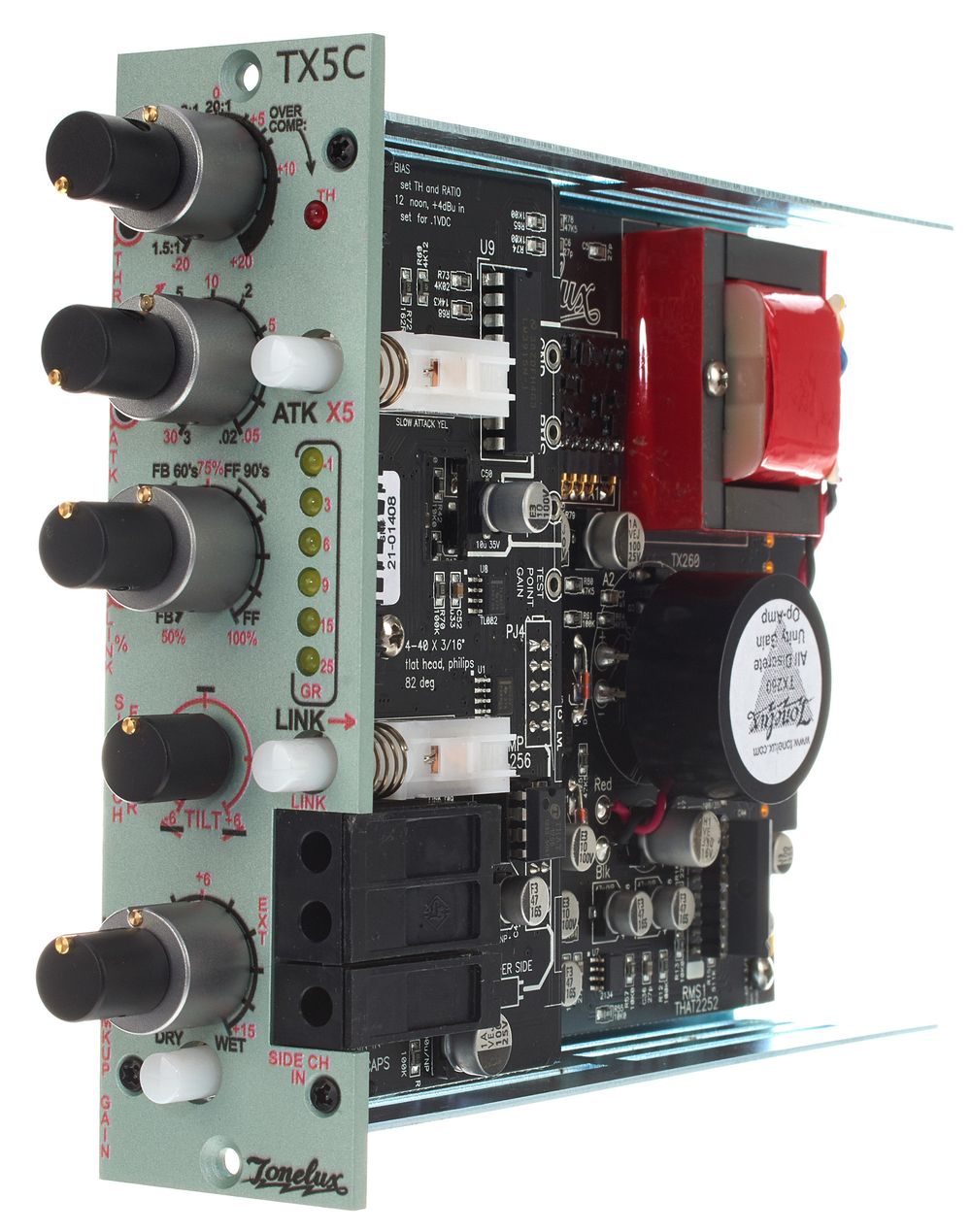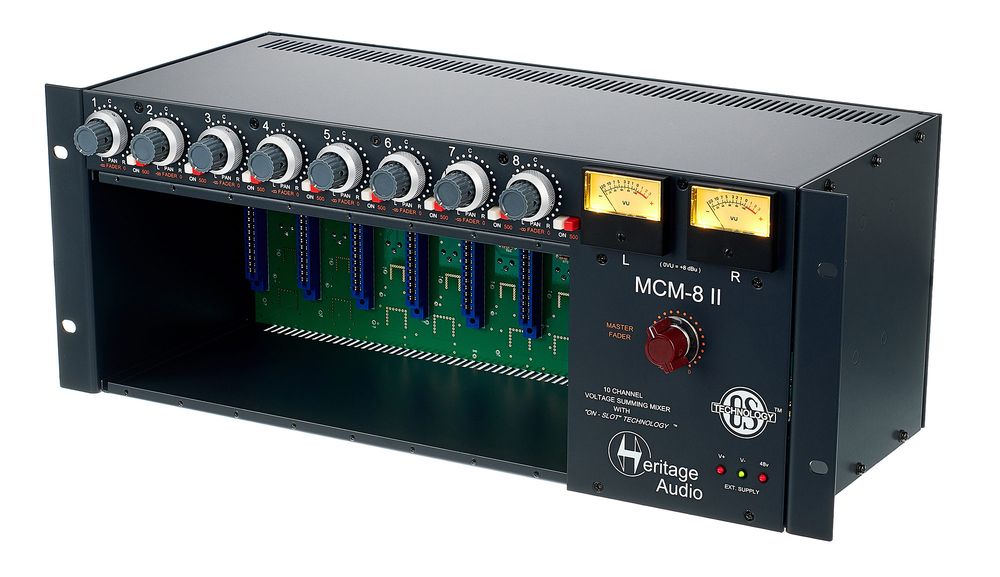3. Operation
Operating the System 500 is actually quite straightforward: the small modules do not have their own power supply. Since they lack their own power supplies, they need to be powered in another way.
For this purpose, they are inserted into a slot using a contact strip located on the back, similar to inserting a computer memory card.
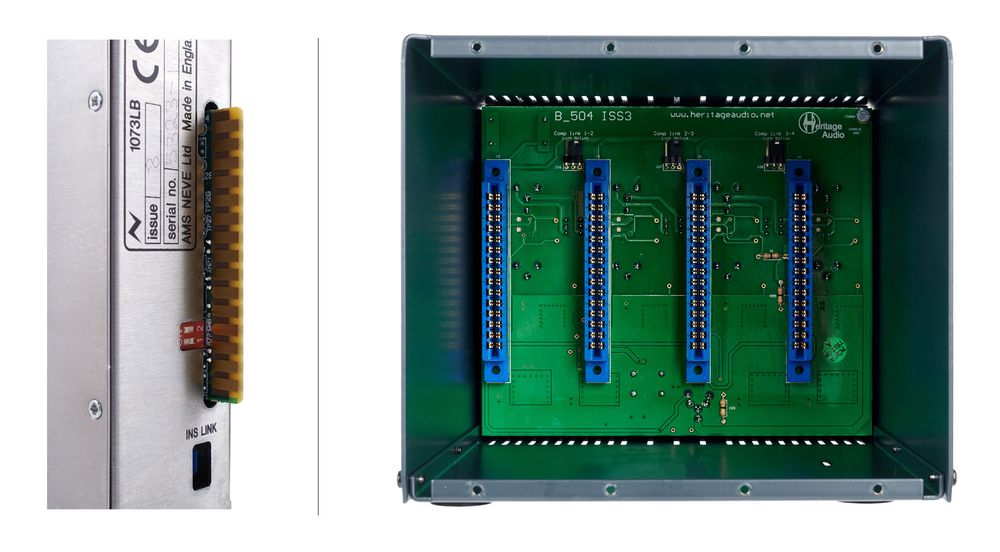
Left: Contact strip on the back of a 500 series module. Right: Slots in a housing.
The front plate with the controls is fastened with two small screws at the top and bottom. The device that takes care of the power supply is called a housing or frame. Housings that can accommodate six or eight of these modules are very common.
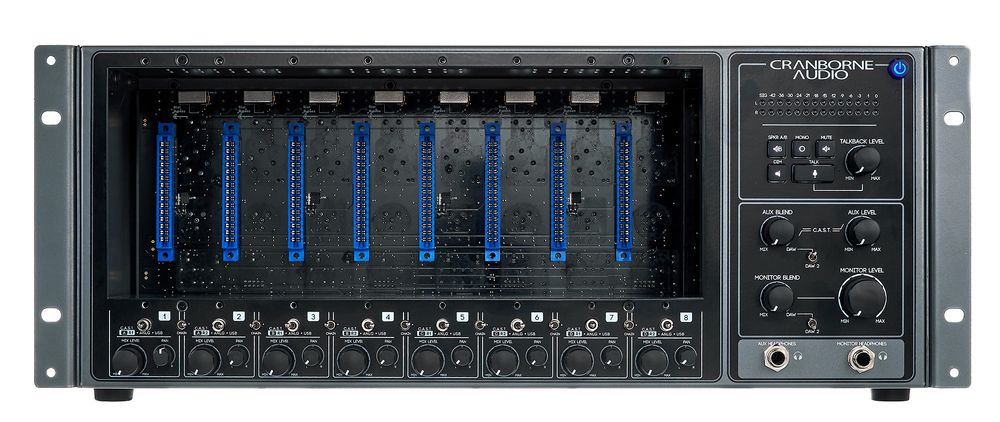
Unfilled housing
Another essential task of the housing is to provide the analog audio inputs and outputs for the modules. There is one input and one output for each slot. This also means that stereo modules must be double the width of a single slot.
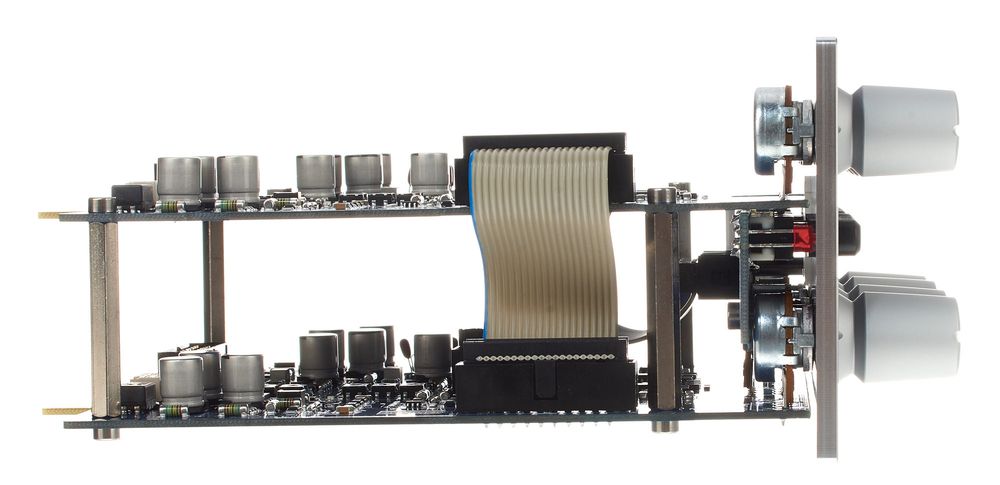
View of a 500 series module with double width. The two contact strips are visible on the left, and the controls are on the far right.
500 Series Module
- Standard-sized cassette
- Contains audio processing (preamp, EQ, etc.)
- Requires power supply, audio cabling, and mechanical fixation through a housing
- Has a contact strip on the back
- Can have various slot widths
- Sometimes has additional connections on the front
- Available from different manufacturers
500 Series Housing
- Provides inputs and outputs
- Supplies power to modules
- Mechanically secures modules with a slot and two screws
- Available for different numbers of modules and from different manufacturers
Installing a Module
- Slide the module into an empty slot.
- Secure it with two screws at the top and bottom on the front of the housing.
- Connect the inputs and outputs (usually XLR) on the back of the housing as desired
Of course, there are also some variations and special features. Some modules are so complex that they require a lot of space for controls and indicators or generate a significant amount of heat. Therefore, mono modules are sometimes designed to be double width.
For example, an additional input and output is often provided, such as a DI input for a microphone preamp. This is then located on the front of the module! Some microphone preamps offer this option for the XLR socket as well to simplify the cabling.
Many housings do not limit themselves to providing a mechanical frame, power supply, and audio I/O but come with very practical features.
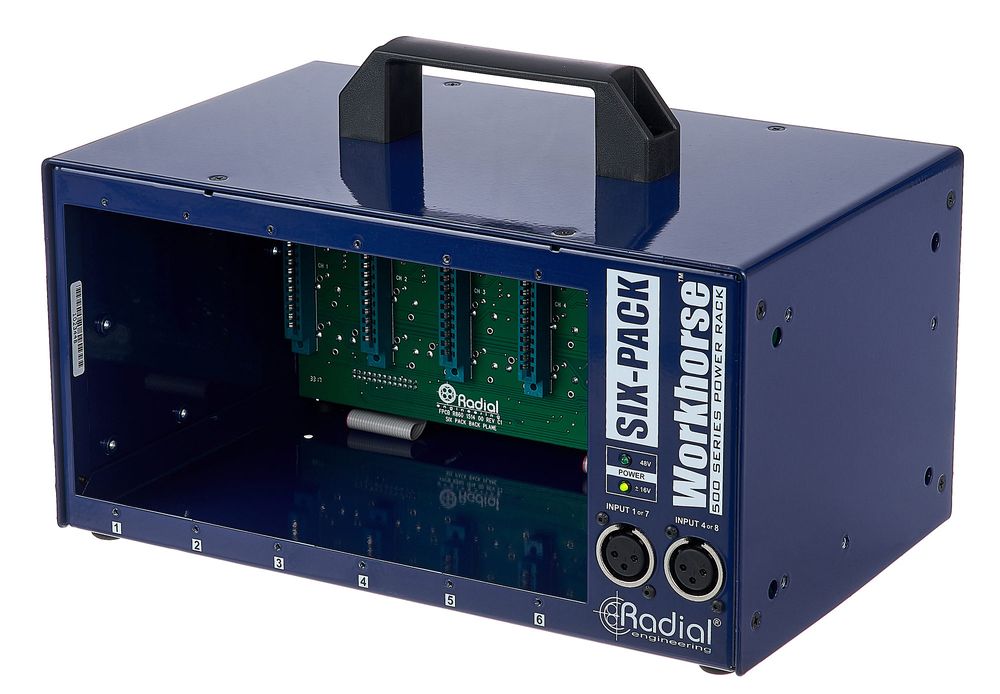
Mobile Housing
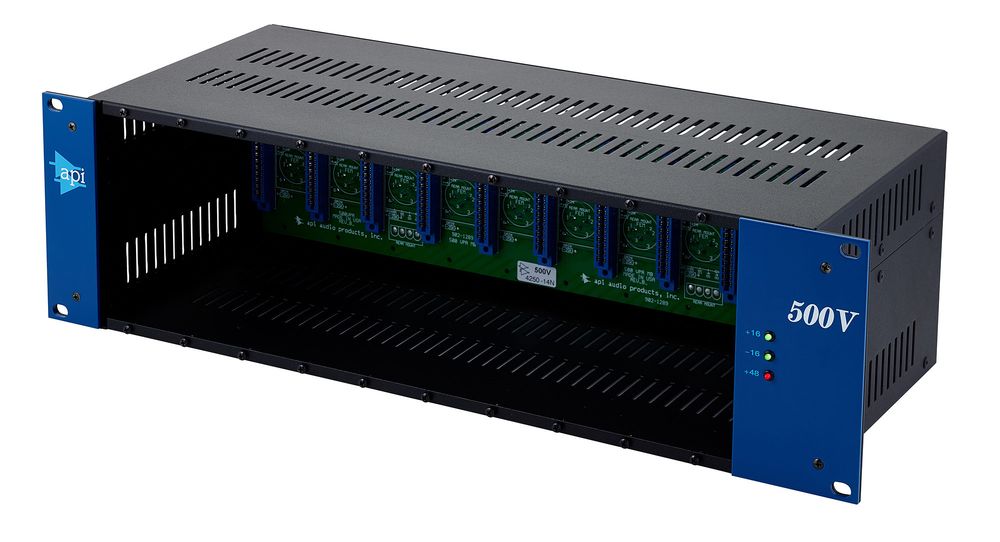
19" Housing




